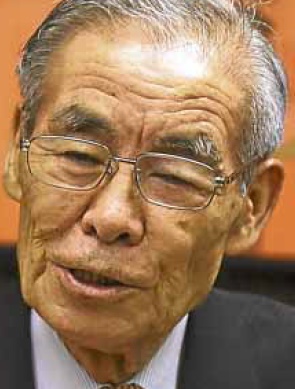Reviving Cambodian culture, identity

Yoshiaki Ishizawa–Lyn Rillon
When he first laid eyes on Angkor Wat 57 years ago as a 23-year-old university student, Yoshiaki Ishizawa was so fascinated with the ruins that he vowed to study in-depth the ancient architectural marvel and the once prosperous civilization it represented.
“I was impressed by the fact it was a huge monument and it was a monument built 800 years ago,” Ishizawa said, recalling his amazement at the high level of workmanship on the temples, statues, pinnacles and other stone structures in the 162-hectare temple complex in Cambodia.
Angkor Wat is now regarded as the world’s largest religious monument that dates back to the 12th century. The complex embodied the Khmer Empire, Southeast Asia’s greatest civilization whose godlike rulers reigned over present-day Cambodia, Thailand, Laos and southern Vietnam from the 9th century to the 15th century.
Nation-building
After Ishizawa earned his bachelor’s degree at Tokyo’s Sophia University, he returned to Cambodia in 1961 to pursue his research on Angkor Wat under the guidance of French archeologists. Over the years, he rose to become a professor, dean and president of the university.
For his life’s work in saving the World Heritage site and its significant contribution to nation-building for war-ravaged Cambodia, the eminent Japanese scholar on Southeast Asian history and author of several books on Angkor Wat will receive the prestigious Ramon Magsaysay Award.
“I’m very happy, but at first I did not understand why I received the Ramon Magsaysay Award for developing human resources in Cambodia. Now I finally understand,” said Ishizawa, who will turn 80 in a few weeks.
A few years after Ishizawa began his research in 1961, Cambodia plunged into a civil war and the country fell into a harrowing genocide under the Khmer Rouge regime. About 2 million Cambodians died in mass executions, torture, starvation, disease and exhaustion from 1975 to 1978.
Only three of the 40 Cambodian conservationists who had worked with Ishizawa survived.
As the nation stabilized after the ouster of the Khmer Rouge, Ishizawa, who by then was a professor at Sophia University, led efforts in Japan and Cambodia to save the badly neglected Angkor Wat.
“Starting in 1980, Ishizawa worked side by side with Cambodians, networked with international experts and organizations, campaigned in the Japanese media to generate awareness and support, and devised programs for Angkor’s protection and conservation,” said the Ramon Magsaysay Foundation (RMF).
In 1989, the Sophia University Angkor International Mission was launched to do research, training and conservation work on Angkor Wat. Ishizawa led the mission while collaborating with Cambodian agencies and intergovernmental bodies.
“Ishizawa has been at the center of activities which also include technical studies, public heritage education, and restoration work, all aimed at the sustainable development of Angkor,” the RMF said.
Training the young
Ishizawa said he was moved to train young Cambodians to sustain the conservation and restoration work after so many of their countrymen who were experts were killed during the war.
In 1991, he brought a group of Cambodians to Japan and supported their studies in Sophia University. At least 18 have earned postgraduate degrees related to conservation and returned to Cambodia to occupy prestigious posts and lead the conservation work.
“Now, after so many years, we have a number of young Cambodians who have taken the initiative to do preservation, conservation and restoration work to build up the ruins,” Ishizawa said.
He also brought scholars from Japan to Cambodia to join him in fieldwork. Working together, Japanese and Cambodians learned from and respected each other, he said.
Culturally sensitive
The RMF said Ishizawa was “quite singular is his culturally sensitive and long-term approach” to Angkor Wat’s restoration.
“A historian steeped in Khmer epigraphy and early Cambodian history, he does not favor quick, aggressive engineering interventions but views Angkor’s conservation as integral to the rebuilding of Cambodian culture itself. Hence, he has put the premium on appropriate technology, bringing Japanese stone masons to work with Cambodians so they can learn from each other,” the RMF said.
Ishizawa said the work to restore Angkor Wat has brought all the warring factions together at last. The conservation work also has helped revive Cambodian culture and identity. More importantly, all these efforts have become a “movement for peace,” he said.
“So I think that is the work we have done so far. We have helped in the restoration of Angkor Wat for the rebuilding of the identity of the Cambodians and for the creation of peace in the country,” Ishizawa said.
“That’s the reason I received the award. Now I understand,” added the bespectacled professor, who said he was looking forward to the next phase of the restoration work, which would take three years starting in October.